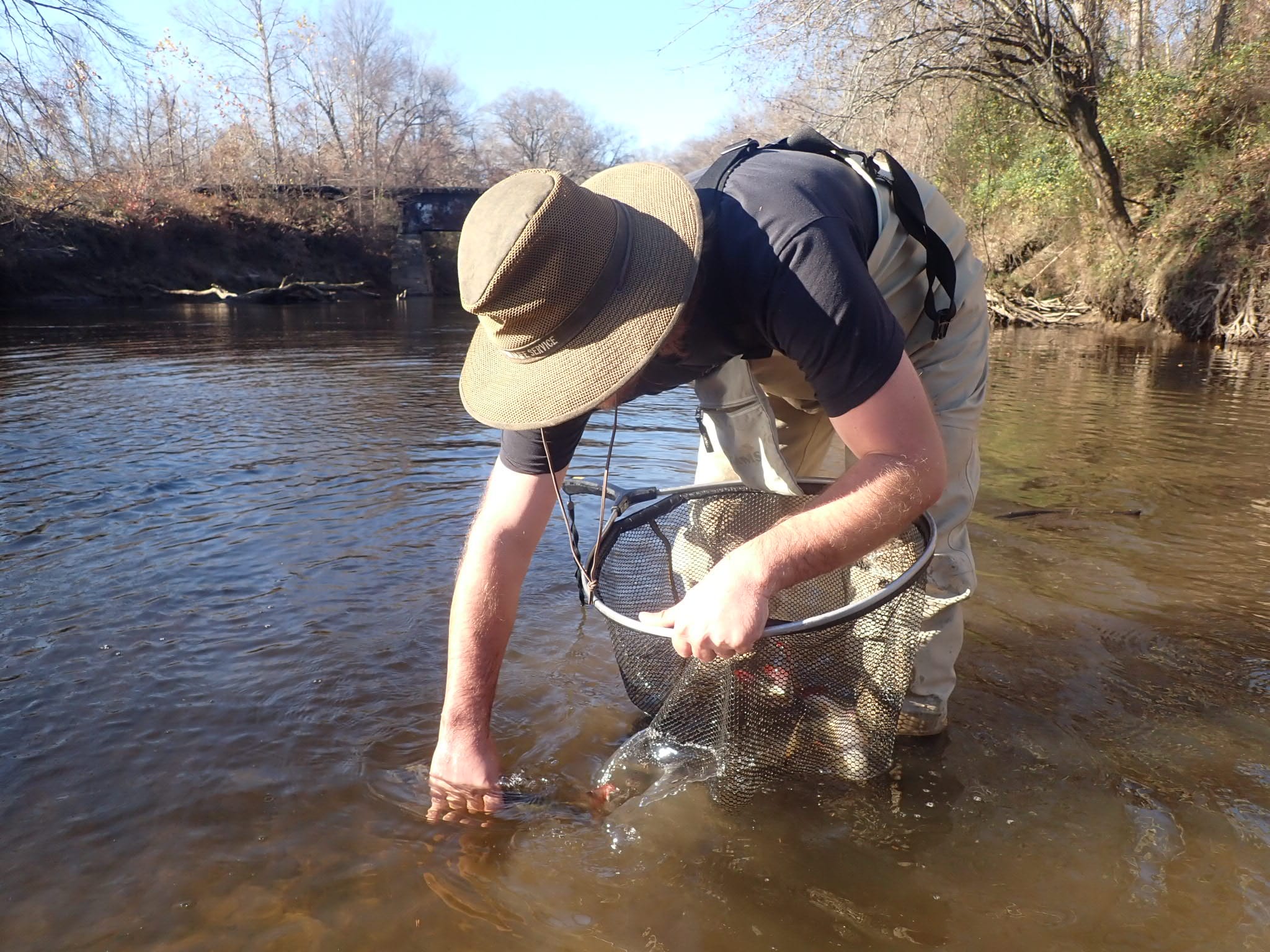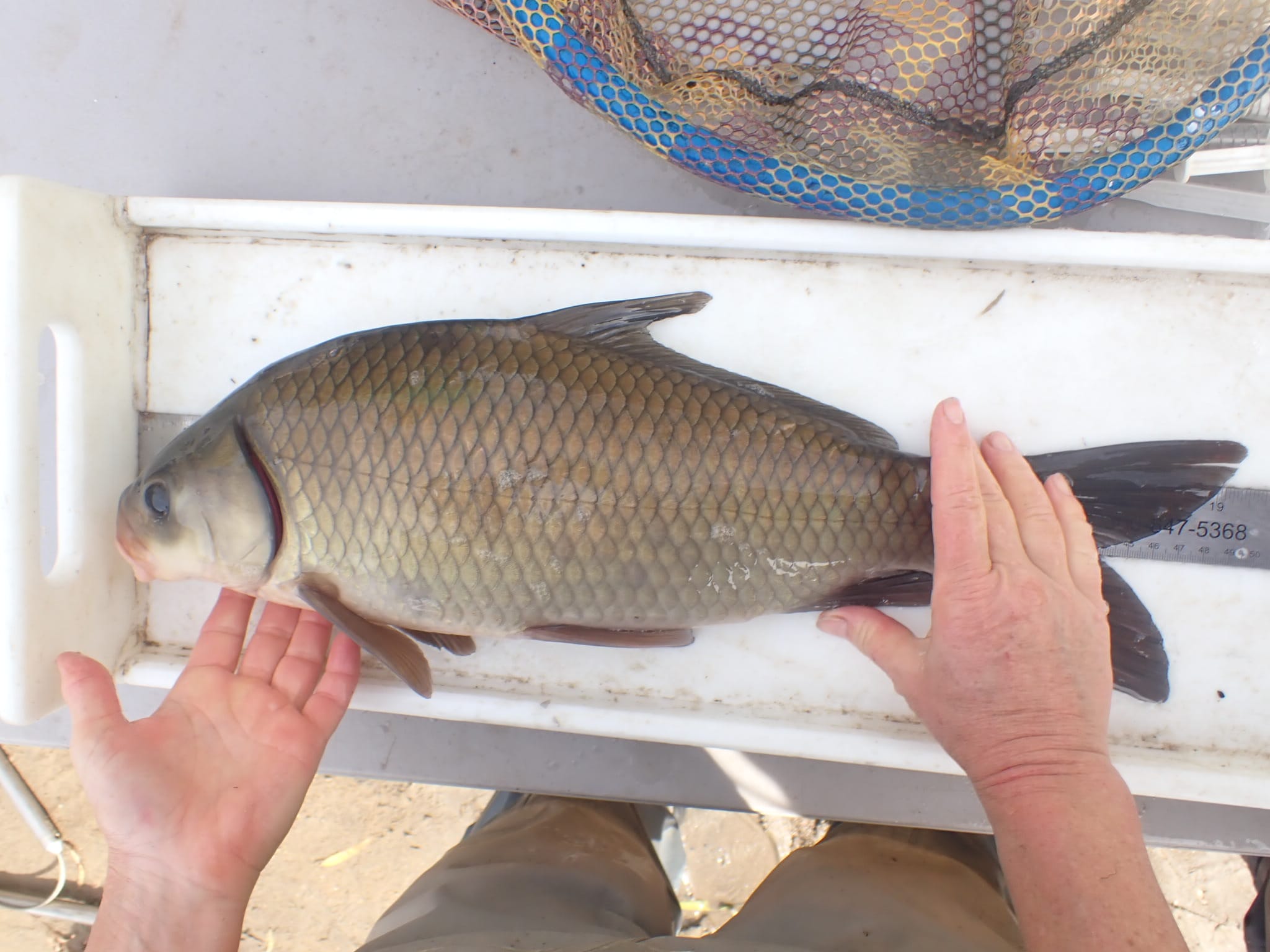Fish Species Making a Return to the Upper French Broad

Photo by Luke Etchison
By Torry Nergart, Conservation Easement Manager
There have been well-meaning but misguided machinations for the French Broad River for centuries. Here in the upper reaches, the productive farmlands of Rosman could have been under water, dammed by the TVA. Grandiose visions of steamboat traffic went bust soon after launch. But one sort of idea is taking a positive hold: restore the natural waterway and the wetlands that buffer it, and help the river heal itself.
One such effort is the reintroduction of three species of fish. The Black Buffalo, the Smallmouth Buffalo, and the Smallmouth Redhorse are making their return. These fish faced insurmountable obstacles- literal ones, to reach their spawning grounds- the many dams built in the 1900’s on up the ‘60s. These river bottom fish also suffered the scorn of wildlife managers, seen as undesirable competition for sportfish. Finally, heavy alteration to the waterway by industrial pollution, dredging, straightening, and disconnection to the floodplain wetlands led most to call the river “dead.” These fish have not been seen in the upper Broad for around 150 years, until now.

Black Buffalo photo by Luke Etchison
I spoke with Luke Etchison, a Native Rivers Conservation Biologist with the Wildlife Resources Commission who is spearheading the reintroduction effort. Luke speaks fondly of these big river sucker fish, important to the aquatic ecosystem for so many reasons – as they spawn they import lots of energy into the food web, right when needed most. Luke describes a great deal of that energy staying in place too, not simply washing downstream. Their spawn is also reliable, as unlike salmon, these fish do not die but return again and again.
Someone who would see with a fishes’ eye view if this effort is a success is Kevin Merrill, owner of Oxbow River Snorkeling. Kevin states “it will take time to learn if these fish will use the upper reaches of the French Broad (the Headwaters and the Forks), and if that is for just spawning or for more general uses.” Kevin will be monitoring for these three fish species, but also for its effects on the river ecosystem. He’s hopeful that the reintroduction will “benefit the overall health of the river, which does include the sportfish that may feed on them, but also the insects, mussels, and non-game fish.”
Luke describes what makes a successful reintroduction- the protection of the larger watershed and the restoration of good habitat in the river. Conserving Carolina has restored the Mouth of Mud Creek, creating backwater sloughs, oxbows, and wetlands- all provide the habitat heterogeneity these fish and many other life forms require for their variety of needs. Surrounded by Pisgah, Headwaters and Dupont State Forests, and many Conserving Carolina protected lands, the upper French Broad receives a bit more buffering than the downstream reaches. And the river restoration work keeps on, building on successes of the reintroduction of these sucker fish, the Muskie, and other species that can use the improved habitat.
In talking with Luke his enthusiasm perks when discussing progress we’ve made in improving the river. “For 100 years everyone considered the French Broad a dead river,” echoing a common description as ‘too thick to swim and too thin to plow.’ What he is hopeful for is a river that is set back to more natural conditions, “so that the river can heal itself” referring to natural processes of the waterway meandering, filling wetlands, creating varieties of habitats.